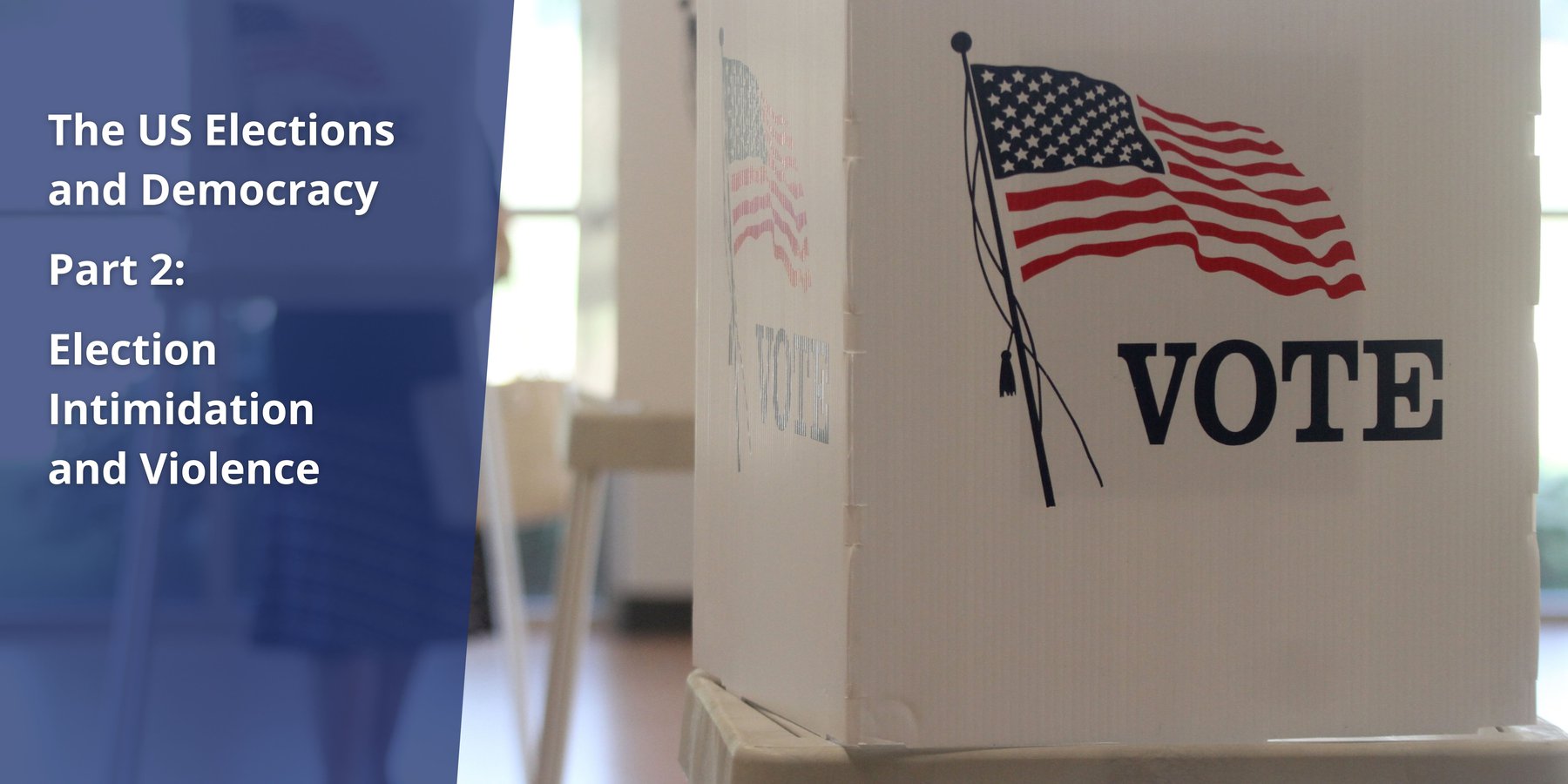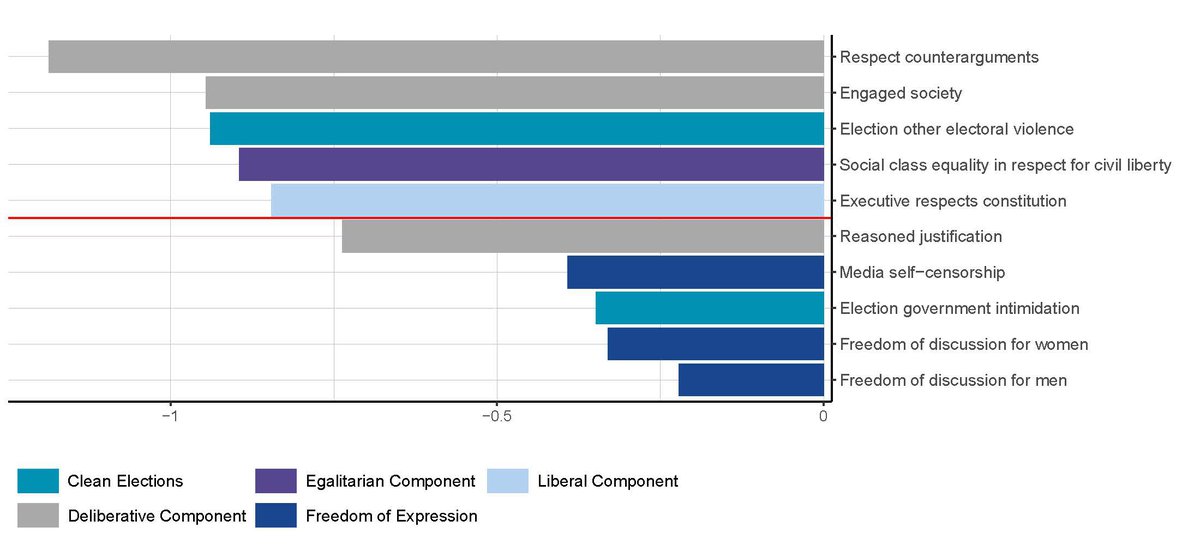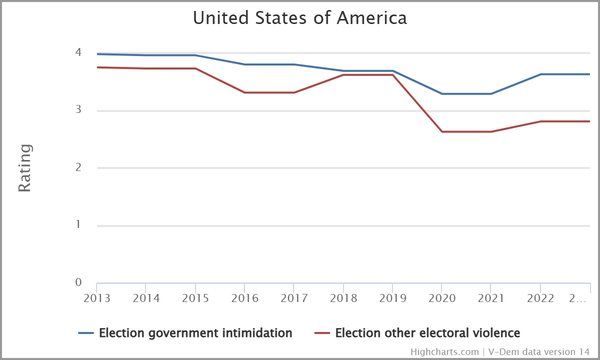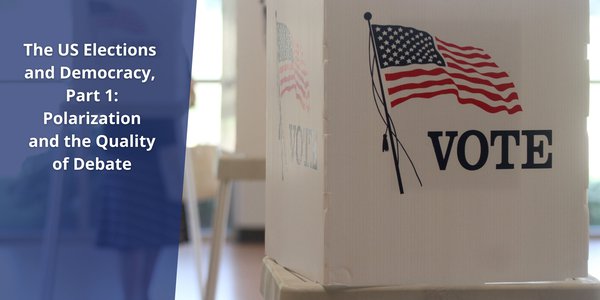The V-Dem Institute’s Democracy Report 2024 reveals a concerning global trend of declining quality of elections, and the US is no exception. Contrary to the allegations made by Trump and his supporters, the main reason for this worsening is not an increased prevalence of election fraud or irregularities.
In this second article on the US Democracy and the upcoming presidential election, we look into the increased election intimidation and violence, measured by the V-Dem project. (Previous article on Polarization and the Quality of Debate)
Figure 1 shows the ten V-Dem indicators that have declined the most in the US during the last decade, and which aspect of V-Dem’s democracy indices they are part of.
Fig. 1: Top 10 worsening indicators in the US, 2013-2023
This figure plots the top 10 indicators that declined the most in the US between 2013 and 2023. The red line marks the top 5 indicators. An indicator is declining statistically significantly if its 2023 value is lower than its 2013 value on a scale from 0 to 4 (for most indicators), and the confidence intervals do not overlap.
Of the ten indicators in the figure, the two bright blue ones are part of the Clean Elections Index, which measures to which extent elections are free and fair. This includes whether there is an absence of registration fraud, systematic irregularities, government intimidation of the opposition, vote buying, and election violence.
Declining Quality of Elections
The US’ score on the Clean Election Index started to decline in 2016 and despite an increase in 2023 is not back to pre-2016 levels (not shown here, check with the V-Dem graphing tools). Contrary to the allegations made by Trump and his supporters, the main reason for this worsening is not an increased prevalence of election fraud or irregularities. Rather, it is related to increased electoral violence, and election intimidation by the government.
Fig. 2 Election Intimidation and Violence in the US, 2016-2023
The figure shows the change in the level of Election government intimidation and Electoral violence (not by the government) in the US in the past decade. The closer to the top, or score four, the better the situation, meaning less election intimidation and violence.
Electoral Violence
The 2016 presidential campaign was marked by violent incidents at Trump rallies and post-election anti-Trump protests. Electoral violence rose again during the 2020 campaign, culminating in the attack on the Capitol by Trump supporters in an attempt to overturn Biden's victory.
With increasing polarization, the line for what is acceptable in public debate has been pushed further. During campaign speeches, Trump has called his opponents “vermin” that need to be rooted out, and recently suggested that he could use the US military or National Guard against the “enemy from within,” referring to, and specifically naming political opponents.
Such dehumanizing rhetoric paves the road for further political violence. Two recent assassination attempts on Donald Trump and threats against election workers illustrate this concerning development.
Threats against election workers
Intimidation of election workers has become a salient issue since Trump’s 2020 repeated and baseless accusations of election fraud, and continued refusal to admit loss. Furthermore, “election deniers” elected as house members and local election officials that aim to undermine the electoral process, for example by refusing to certify the results, pose a significant threat.
The new V-Dem Working Paper “Forecasting Electoral Violence” introduces a predictive system for electoral violence. It suggests a significant risk of election-related violence in the United States. The paper emphasizes that safeguarding the electoral process from violence is vital to allow citizens to cast their vote free from fear, and to ensure peaceful power transitions.
Also see this Graph of the Week
V-Dem Working Paper no. 150: Forecasting Electoral Violence
Previous article in this series: Polarization and the Quality of Debate





